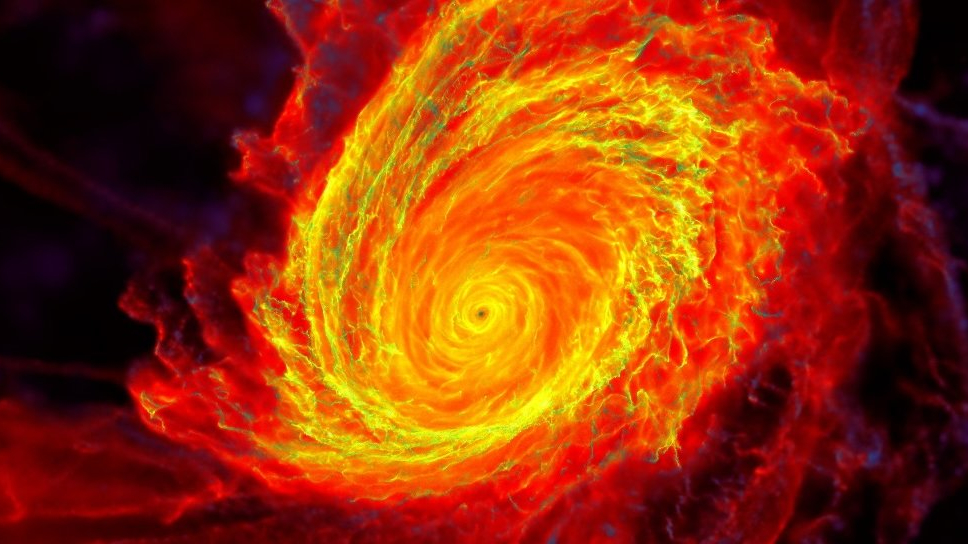
Supermassive black holes are behemoths between millions and billions of times heavier than our sun that lurk at the centers of most galaxies in our universe, including our own Milky Way — and they're best known by the brilliant disks of gas swirling around them. These disks are the remains of ill-fated stars that were once shredded and trapped by the black holes, which actually feed off of these disks themselves. Yet, scientists still aren't certain how, exactly, black holes feast.
For instance, astrophysicists have puzzled for decades over why material that gets swept up by the black hole does not immediately fall into its abyss. Instead, it all comes together to form and maintain a hot, rapidly spinning disk that then spirals toward the black hole. And, in the process, the disk radiates brilliantly while converting gravitational energy into heat. The disk is the main source of light from a black hole, and hovers as long as there is material nearby for the void to suck in.
A new computer simulation suggests this prolonged existence of accretion disks may owe itself to each disk being almost completely controlled by the magnetic fields of its respective black hole. It's possible that these fields direct the gas into disk-shapes. Scientists say the simulation, which, for the first time, traced the journey of pristine gas from the early universe up to the point in which it ends up in the accretion disk of a supermassive black hole, can help them fine-tune their predictions about various aspects of accretion disks, including their masses, thicknesses and the speeds of material falling in.
"Our theories told us the disks should be flat like crepes," Phil Hopkins, a theoretical astrophysicist at the California Institute of Technology said in a statement. "But we knew this wasn't right because astronomical observations reveal that the disks are actually fluffy — more like an angel cake. Our simulation helped us understand that magnetic fields are propping up the disk material, making it fluffier."
Related: Weird physics at the edges of black holes may help resolve lingering 'Hubble trouble'
Hopkins and his team did what they describe as a "super zoom-in" on one virtual supermassive black hole. To virtually replicate the black hole's dynamics, the researchers input information about the physics of various cosmic phenomena on galaxy scales. These included equations that govern gravity, dark matter and dark energy — the latter of which are elusive substances making up the majority of the universe's content — as well as stars and galaxies. Creating such a simulation was not only a computational challenge but also one that demanded a code that could simply handle all the complex physics, the researchers say.
A culmination of two large collaborations at Caltech, dubbed FIRE, which focuses on large-scale structures in the universe, and STARFORGE, which examines small-scale structures, allowed the team to create a simulation whose resolution is a thousand times better than its predecessor, according to the university statement. "We built it in a very modular way, so that you could flip on and off any of the pieces of physics that you wanted for a given problem, but they were all cross compatible," said Hopkins.
Using that code, the researchers simulated a black hole 10 million times heavier than our sun, starting in the early universe. The simulation then flies through a complex tangle of merging galaxies before zooming into an active supermassive black hole, or quasar, circled by an accretion disk, which is shown feeding gas to the black hole at rates comparable to brightest known quasars in our universe.
Magnetic fields can be seen taking away momentum from the disk, which frees the material to spiral inward till it arrives at the event horizon or the "surface" of the black hole, where it can't escape.
"In our simulation, we see this accretion disk form around the black hole," Hopkins said in the statement. "We would have been very excited if we had just seen that accretion disk, but what was very surprising was that the simulated disk doesn't look like what we've thought for decades it should look like."
The findings are described in a paper published in March in The Open Journal of Astrophysics.







